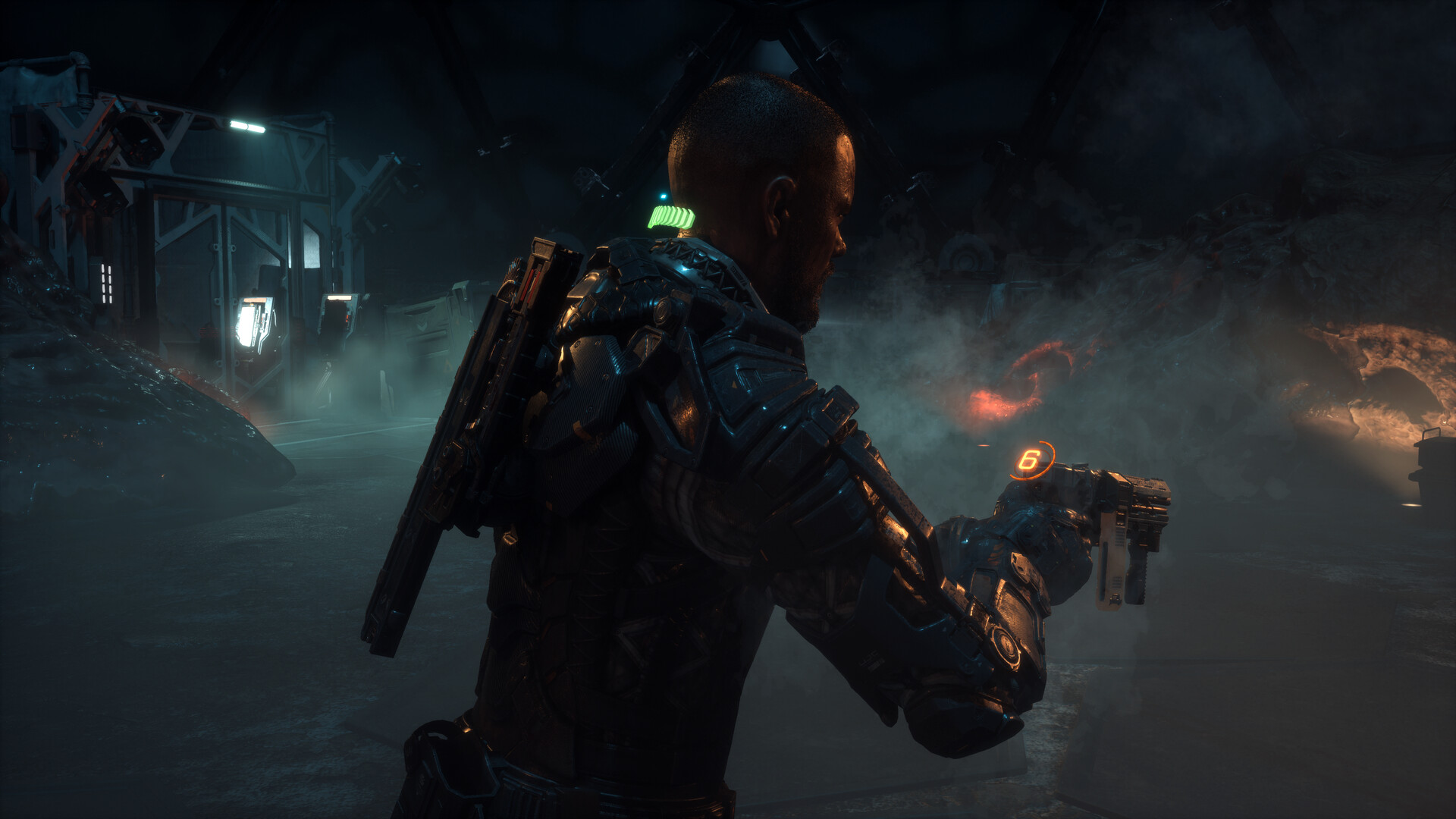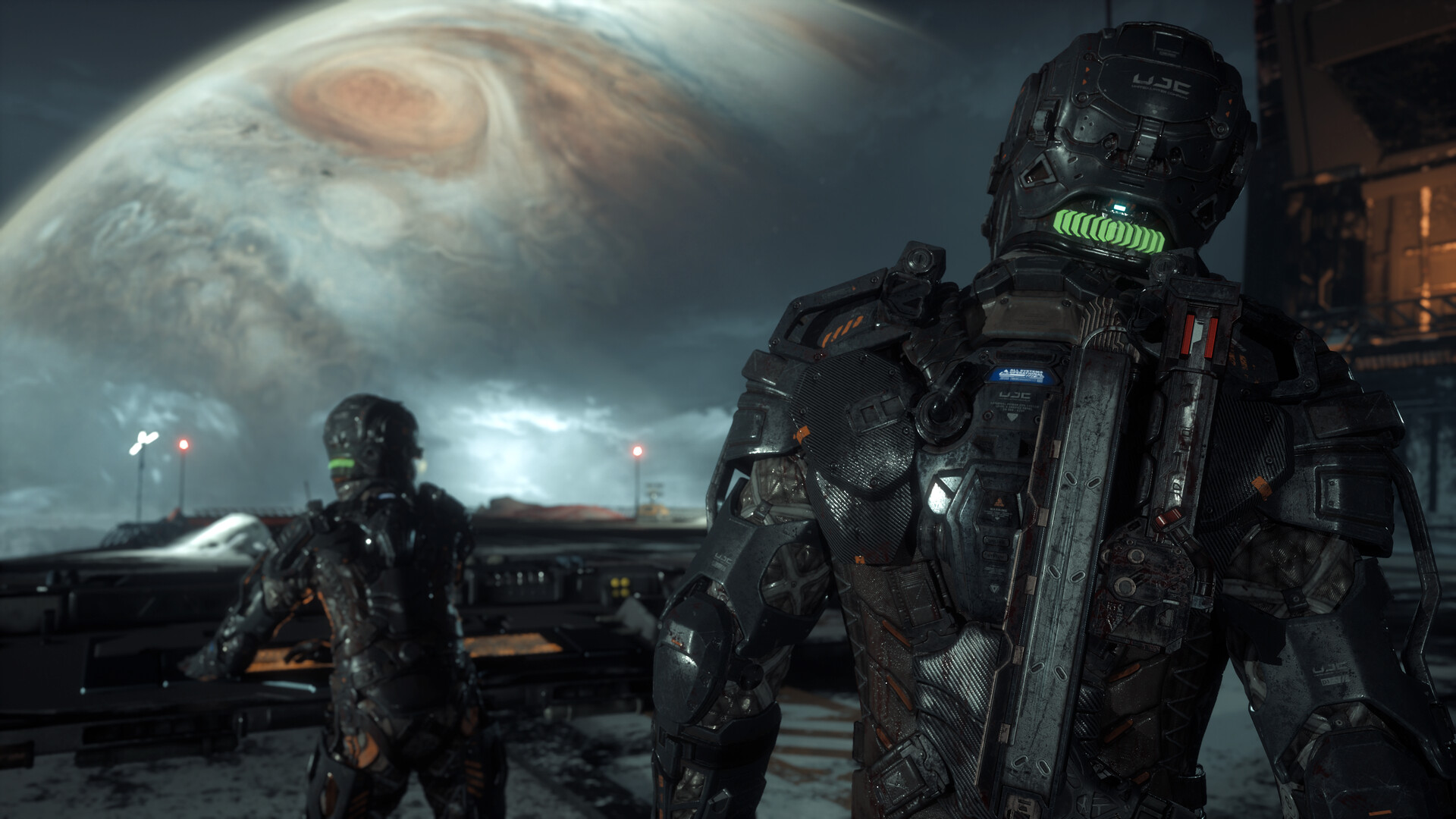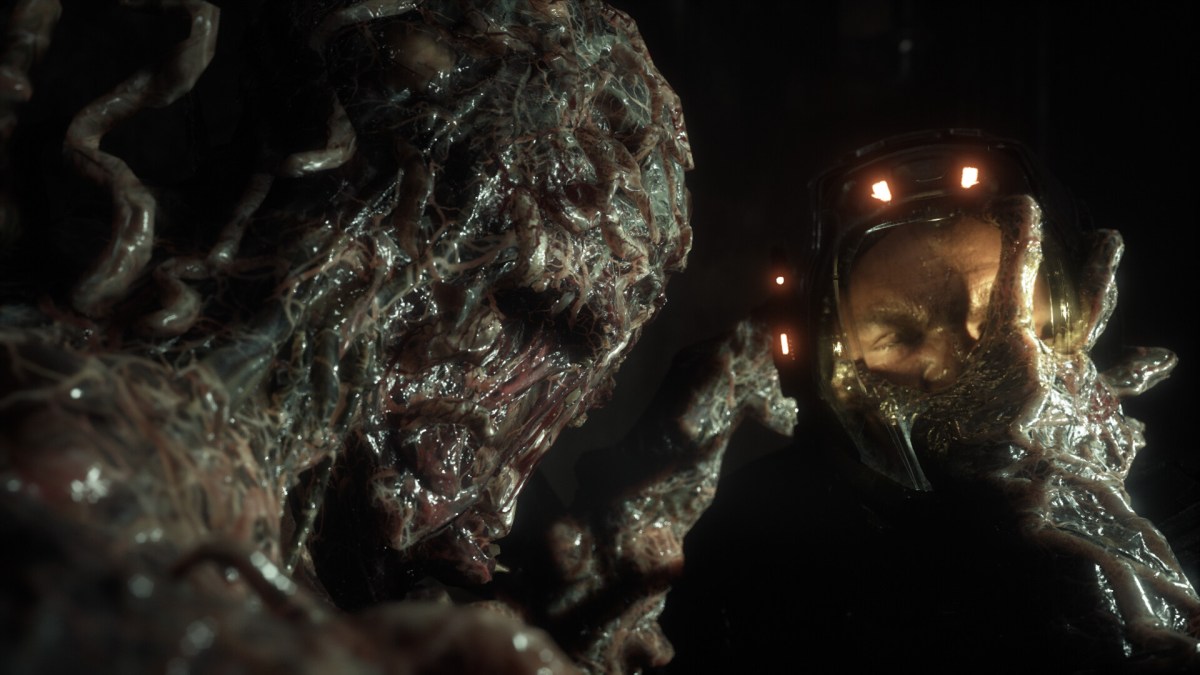There’s a room quite early on in The Callisto Protocol that confused the hell out of me. By that point, Jacob Lee and I were acquainted with the mindless pseudo-zombies that had taken over Black Iron Prison. We’d seen that the inmates and guards alike had survival as their highest priority; if there was fighting between the two groups, we were completely removed from it. And that’s why confusion was more prominent than horror when we slipped into a room filled with the hanging corpses of guards.
It was a place that felt out of place.
The imagery will be familiar to most purveyors of dystopian fiction. Similar scenes have made appearances in Game of Thrones, BioShock, and The Handmaid’s Tale to list but a few examples — almost always as a warning to the protagonists or as punishment for the victims (and often both at same time). Elsewhere, hanging bodies are sometimes at the entrances to enemy camps in Days Gone, creating both a hazard for players and a kind of alarm system for NPCs. Whether for narrative, gameplay, or both, the abused bodies on display serve a clear purpose in those fictions.
That’s not the case in The Callisto Protocol. The room is completely without in-universe context and remains so even once the credits roll. Without any justification for its existence, the room leaves us with the sense that the developers are trying to tap into stock imagery to create a horror vibe. The impression continues beyond the room to the generic body horror of the biophages and the frozen environments outside the facility. We’ve seen it all before, in media as disparate as Stray and The Thing, Dead Space 3 and Videodrome.
While calling back to other media (intentionally or not) can be a great way to set expectations, in the process of doing so The Callisto Protocol seems to forget to carve out its own identity.

A fiction’s identity comes from many factors, but one of the most powerful — particularly in visual media — is setting. This is particularly true for speculative fiction, where environments set boundaries around the possibility space. As an example, consider Arrakis from Dune: a desert world where exposure to the elements will kill in hours, if the giant sandworms don’t get you first. Add in that the planet is the only known source of melange in the universe, and you have the pieces in place for the heady mix of political drama and individual threat that makes it one of the most acclaimed science fiction novels of all time.
Night City in Cyberpunk 2077, Mid-World (and the wider multiverse) of Stephen King’s The Dark Tower series, and Gaia in Grace Chan’s Every Version of You are just a few further examples. A sense of social oppression, an epic journey, an exploration of selfhood in a post-human world all begin with a clearly defined setting.
What may be most frustrating about The Callisto Protocol is that it gets it right at the start. Black Iron Prison is a clearly defined environment. One of the first areas that Jacob can access is a panopticon, with inmates’ cells built into the walls around a central observation deck. It’s a manifestation of Jeremy Bentham’s architectural design, with all of the nightmarish implications it offers. Inmates can be under constant, intrusive surveillance. That plays at the back of your mind as you try to make your way into the observatory. Is someone watching? Is someone waiting?
The clear sense of a prison environment carries through beyond that initial location. The unflinching robot guards, the solitary confinement cells, the not-quite-sanitary medical rooms all play into the overarching fiction of a place where your rights are limited and escape should not be possible. That is the possibility space of The Callisto Protocol.
At least it is until it isn’t.

Trying to pinpoint where the breakdown begins would be a fool’s errand, but one early point of significant dissonance is the GRP device (the game’s version of telekinesis). It’s a useful gameplay tool, but its place in the fiction feels vague. While a utilitarian purpose around inmate transfer is buried amidst the lore, we only ever directly see and hear of its being abused to torment prisoners. This explication ties to the game’s themes of the indiscriminate (mis)use of power, though that doesn’t mean it sits easily within the plot. Instead, it’s a hiccup in the possibility space.
From there, it’s not long until The Callisto Protocol gets a little lost. Prisons are more than cells and administrative areas. They’re complexes. On a dead world, the scale required to run such a facility would be magnitudes greater. Therefore, it makes sense that the story sees Jacob explore far beyond the headline areas of a prison: into sewers, security areas, vehicle hangars, and more.
However, once you start to explore those areas, the identity of Black Iron Prison seeps away. Many of these areas feel like little more than variations on a theme: dank industrialism blended with echoes of brutalism — over and over again. The environments are nondescript, easily swapped out for the uninspired backdrops of any number of middle-of-the-road horror experiences. This visual detour into the generic is accompanied by similar treatment of the possibility space, as the game starts to play less like a tense thriller and more like a plodding corridor shooter.
Even in the instances where the game shows flashes of visual inspiration, there’s no gameplay or narrative follow-through. In that absence, the disconnect between play and place becomes most profound.

At this point, comparing The Callisto Protocol to Dead Space is a familiar refrain. Nevertheless, I couldn’t help but think back to Isaac Clarke’s first journey as Jacob neared the midpoint of his. Dressed with trees and plants, Oxygen Processing is one of the most visually interesting stopovers in The Callisto Protocol simply because it’s different. And yet…
When Dead Space drops players into a similar space, it involves a mission to kill a series of Necromorphs that are poisoning the air. It sticks with you because of unity between place and purpose; the Hydroponics deck is key to sustaining life on the USG Ishimura. Your role is to restore that function. In contrast, the detour to Oxygen Processing in The Callisto Protocol has no real purpose. It feels manufactured because all you do is kill more biophages and restart a tram.
It’s symptomatic of a wider issue with the game. Despite the persistent forward momentum, aided by linear design and plenty of literal arrows to point the way, you’re too often left without a clear sense of where you are or why you’re there. The game refuses to give you a reason to connect with the spaces you’re traversing, which is a big part of why its middle feels interminable.
And yet, fundamentally, The Callisto Protocol does understand the value of place. The grim corridors of Black Iron Prison bookend the game. In those sections, the possibility space is clearly defined as that of a prison. Jacob is positioned as subject, which evokes a mood and reinforces the overarching themes. In stepping beyond those boundaries, The Callisto Protocol stumbles and finds itself in a wilderness that it never sought to create.






Published: Dec 19, 2022 12:00 pm